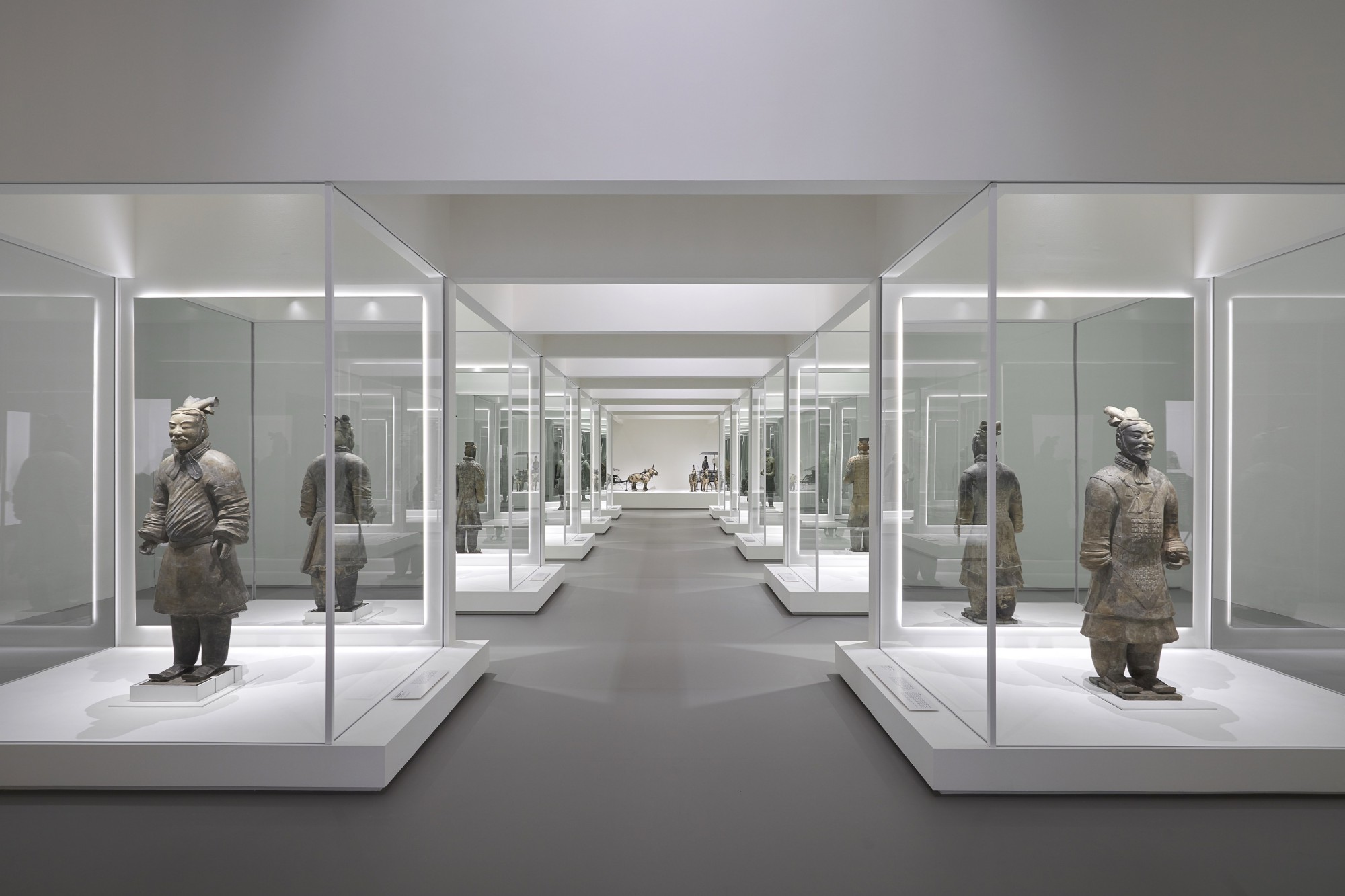
Terracotta Warriors: Guardians of Immortality & Cai Guo-Qiang: The Transient Landscape
⬤ 23 May - 12 Oct 2019
“Imagine they all come alive!” says a young schoolboy. His words, along with the highly naturalistic style of terracotta warriors, remind us of Mamoru Oshii's renowned screen production Ghost in the Shell: Innocence (2004). The film discusses the ambiguous boundary between human and anthropomorphous robots, challenging the conventional understanding of life as distinct from technology. Through “Terracotta Warriors & Cai Guo-Qiang”, this year's Melbourne Winter Masterpieces presentation at the NGV Internationalis primarily an introductory exhibition of Chinese funerary rituals, at certain points it addresses the tragic aspect of human destiny just like Oshii's film. Cai's focus on Taoism raises the inquiry of our human relationship with the universe. Together, the unique combination of the ancient terracotta warriors and a contemporary Chinese artist may encourage audiences to rethink mankind's long-lasting question of the relationship between life and death.
Cai Guo-Qiang did not produce a great number of artworks for this exhibition, but his juxtaposition with the antiquities effectively amplifies the latter's subtle melancholy and reminds audiences of our relative powerlessness when it comes to death. Most of the archeological discoveries displayed in “Guardians of Immortality” are tragic in themselves: outstanding craftsmanship was initially carried out as a demonstration of the Empire's extraordinary power, yet were followed by the surprisingly rapid collapse of the Qin dynasty.
The fragility of human achievements demonstrated by “Guardians of Immortality” echoes with the transitory life cycle of peony flowers as depicted by Cai. In Transience I (Peony), the heavily contaminated white porcelain, flimsy petals and wrecked blossoms all remind audiences that, regardless of its “heavenly fragrance”, beauty is momentary and perishing is inevitable. The complementation of the ancient with the contemporary lifts the exhibition's theme to the understanding of life and, consequently, transforms “Terracotta Warriors & Cai Guo-Qiang” from an exhibition of distinct regional features to one that can resonate with universal audiences.
Besides the unavoidable perish of flesh, another tragedy that Cai touches on is humanity's inability to confirm its own existence. “Sometimes I wonder if life is merely an illusion, a dream… (and death is) the eternal state of things” said Cai regarding Transience II (Peony). Indeed, the state of living is much less concrete or stable compared to the state of lifelessness. In the era of gene editing, our biological structure can no longer serve as the proof of our difference from artificial objects. Likewise, our behaviors, where most of our knowledge of individuality and identity develop from, become increasingly manipulable with the development of user-generated “big data”. The question then becomes: how different are we really from those individualised and anthropomorphous artifacts behind the glass? Just like the swarming birds in Murmuration (Landscape), the existence of mankind seems undisputed at first glance, yet deep down it is ghost-like, entangled and beyond full scientific explanation. Compared to the lifeless objects, the state of being is perhaps, like Cai said, more illusory and harder to verify.

Issue No. 1
Grab a copy of Memo’s first glossy annual magazine issue, featuring an extended artist focus on Archie Moore, the 2024 Venice Biennale Australian Representative, with essays by Rex Butler, Tara Heffernan, Tristen Harwood, and Hilary Thurlow.
Issue 1 features articles by Audrey Schmidt, Philip Brophy, Helen Hughes, The Manhattan Art Review’s Sean Tatol, Cameron Hurst, Chelsea Hopper, among your favourite regular Memo contributors. There are reviews and articles, including on Melbourne design art, French literature’s ageing enfant terrible, Michel Houellebecq, Derek Jarman’s Blue (1993), the celebrated Spike magazine cultural critic, Dean Kissick, the local cult-favourite Jas H. Duke, and much, much more.
Memo Magazine, 256 pages, 16 x 25 cm
Throughout the exhibition, we see a humanity that is fragile in front of both death and life, which may render a profound sense of sadness. It is often discouraging to try tackling the mystery of life, but the video near the exit may lighten up your mood: the dust-like, extremely short-lived gunpowder, which could generate unexpected power and produce impressive outcomes, is suggestive of the journey of mankind so far. We are all like tiny dust particles in this expansive universe. None could escape death and most are trapped in the riddle of life. Yet we have made it this far, and achieved considerable feats in culture, in art and science. Although it may just be a wish to believe that our existence means something, most of us choose to think this way. Perhaps this belief is our torch: because of it, life achieves its immortal meanings in the transient moment of ignition.